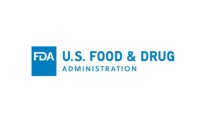Research illustrates trust deficit in agriculture, food processing
When it comes to trust, federal regulatory agencies rank eighth and food companies rank last on a list of 11 choices.

While food companies, federal regulatory agencies and farmers are held responsible for ensuring the health and safety of food, not all are trusted to get the job done, according to new research from The Center for Food Integrity (CFI), Kansas City, Mo. In fact, the findings illustrate a dangerous trust deficit that breeds increased public skepticism and highlights the need for increased consumer engagement by the food system.
“If you’re held responsible and trusted for ensuring safe and healthy food, you are seen as a credible source,” says Charlie Arnot, chief executive officer. “However, if you’re held responsible but not trusted, that’s a dangerous disconnect that can’t be ignored.”
Federal regulatory agencies are held most responsible for ensuring safe food, followed by food companies and farmers, according to the survey.
However, when it comes to trust, federal regulatory agencies rank eighth and food companies rank last on a list of 11 choices.
“The potential fallout is serious, and we’re already witnessing consequences in the food system as public interest in food production and processing grows,” says Arnot. “A lack of trust can result in increased pressure for additional oversight and regulations, rejection of products or information and consumers seeking alternate, and perhaps unreliable, information sources.”
Farmers fared better, ranking third in both responsibility and trust on the issue of ensuring safe food. CFI’s annual research, now in its 10th year, has consistently shown that consumers trust farmers.
“The good standing of farmers presents a golden opportunity for farmers to share their stories, invite consumer questions and help build trust,” adds Arnot.
Rankings for responsibility and trust regarding ensuring healthy food were similar.
Segmenting by influencer audiences, including moms, Millennials, foodies and early adopters, CFI’s research surveyed U.S. consumers on more than 50 topics, including most important issues, trusted sources, purchasing behaviors, pressures impacting food choices and attitudes on farming and food manufacturing.
Research results revealed additional trust gaps when it comes to the environment, animal care and food manufacturing.
For instance, 80% moderately or strongly agree that they are more concerned about global warming/climate change than they were a year ago. However, only 30% strongly agree that farmers are taking good care of the environment.
While 55% strongly agree that if farm animals are treated decently and humanely, they have no problem consuming meat milk and eggs, only 25% believe U.S. meat is derived from humanely treated animals.
Two out of three consumers (64%) hold a positive impression of agriculture, while below half (44%) hold a positive impression of food manufacturing. A majority, around two in three, want to know more about both.
“I am often asked why consumers have a certain, often inaccurate, impression of the food system,” says Roxi Beck, director. “My response is simple—because farmers and food companies haven’t engaged consumers in a way that addresses their underlying concerns. The food system is making great strides toward transparency and responsiveness, which is tremendous, but there is more work to be done. It starts with identifying the drivers of concern vs. providing factual information to address the questions asked. Consumers want to know that farmers and food companies share their values, so simply providing facts or information isn’t enough. Meaningful engagement can be a game-changer. For example, I’ve guided dozens of on-site tours of farms and food companies and the ‘ah ha’ moments are often dramatic when consumers see and hear for themselves how food is produced. This is because they’ve made a personal connection with the individual expert, which allows the conversation to move forward.”
Transparency is a powerful trust-building tool, she adds, and can be achieved in many ways, “ranging from photos and videos to blogs that invite questions. Today’s trust gaps can be closed, and CFI is committed to helping the food system do just that.”
This article was originally posted on www.refrigeratedfrozenfood.com.
Looking for a reprint of this article?
From high-res PDFs to custom plaques, order your copy today!





